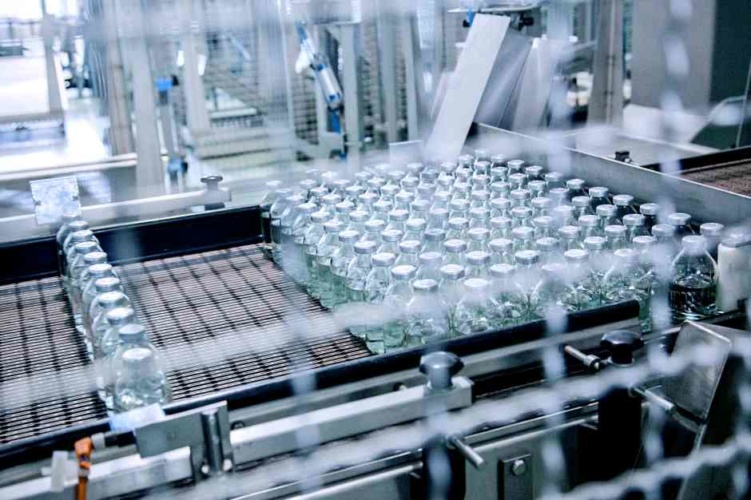While the UK is a world leader in vaccine science, the urgency and scale under which COVID-19 vaccines are needed is expected to put manufacturers under tremendous pressure to deliver. One of the main challenges that will need to be tackled early on is meeting the billion-dose demand using current facilities of finite capacity.
A particularly pressing issue the UK faces is that it has a low number of plants with the capacity to produce vaccines on a large scale
Teams at Imperial College London and Oxford University are among those working to develop a viable vaccine through networks, such as the Imperial Network for Vaccine Research, the Future Targeted Healthcare Manufacturing Hub, and the two Future Vaccine Manufacturing Research Hubs led by Imperial and UCL/Oxford. The Government is supporting these efforts with funding and by having established the Vaccine Taskforce which brings together governmental, academic and industrial partners with the Vaccine Taskforce.
However, a particularly pressing issue the UK faces is that it has a low number of plants with the capacity to produce vaccines on a large scale. Completion of the Vaccines Manufacturing and Innovation Centre (VMIC) in Oxford has been fast-tracked to 2021 and will contribute towards meeting the forecasted demand. But even if facilities are able to meet demand in terms of production, they will need to address potential bottlenecks in their processes and ensure stability of supply chains, which will be crucial to delivering vaccines to the population.

This is where engineers can make a significant contribution. Using modelling we run simulations for the different vaccine platform scenarios while clinical trials are ongoing. This means that once a vaccine formulation has received regulatory approval, we will be in a position to recommend to manufacturers which production setup can deliver the best results.
Timing is a significant factor. Conventional vaccine development, pre-clinical testing and clinical testing takes around 8–14 years, and production process development, facility construction, validation and start-up takes 6–9 years. These timeframes are incompatible with the timelines indicated by a pandemic-response vaccine production, so teams are working hard to try and fast-track this to 12-18 months. This leaves manufacturers with little room for long-term planning and investment.
The challenge of upscaling and modifying facilities in such a short timeframe is compounded by the vast range of vaccine platform technologies on trial. In the UK, COVID-19 vaccines are expected from two main platforms, the RNA and the chimpanzee adenovirus (ChAd) vaccine vector. Each has a different formulation, specific upstream production and downstream requirements. Without knowing which they will be expected to produce, manufacturers are going to find it difficult to fully prepare their facilities for the task ahead.
We are currently assessing the effectiveness of bulk vaccine production, which traditionally uses dedicated, large production plants. We are also looking at a different approach, and evaluating new rapid-response vaccine production platforms, which offer high productivity in small-scale processes. The ideal solution would be developing a manufacturing design that utilises both properties to produce a large amount of vaccines, fast.
Another key challenge the UK vaccine manufacturing sector faces is that of supply chains for the acquisition of critical raw materials
Established technologies have the advantage of existing know-how shared among several organisations, so tech transfer to multiple partners that manufacture in parallel is possible, including contract development and manufacturing organisations. This would enable rapid deployment of existing assets and process optimisation through shared technical knowledge.
On the other hand, emerging technologies such as the RNA platform have very high specific productivity, which leads to small manufacturing footprint. This means two things: they can easily benefit from single-use technologies to establish a brand-new manufacturing facility and can be just as easily scaled out or decentralised to ease the pressure on supply chain.#
MORE COVID-19 TECHNOLOGY NEWS FROM THE ENGINEER
Both of these platforms produce a bulk drug product. This must then be filled into a final delivery form, such as vials. This latter step could well be the bottleneck, especially in the UK. Novel dosage forms such as 200-dose bags are being explored to increase capacity; these would of course mean that the final administration process would change somewhat.
Another key challenge the UK vaccine manufacturing sector faces is that of supply chains for the acquisition of critical raw materials, as normal routes are affected by closed border and limited transportation services. We have already seen the difficulties the UK Government faced in securing PPE and medical supplies from other countries, and we must learn lessons from this to ensure the UK is not left behind when a vaccine becomes available. At the other end, distribution must be flexible to ensure vaccine availability where it is most needed. Initially, this is expected to be in priority groups including healthcare and other key workers, and vulnerable groups.
Engineering models use a systems engineering approach, which will be essential to manufacturing a COVID-19 vaccine by accounting for capacity limitations, supply chain disruption and distribution networks across the whole manufacturing process. Taking this approach enables us to find and address bottlenecks, optimise production and identify scenarios in which the largest vaccine demand is met in the shortest time under resource constraints whilst maintaining cost effectiveness where possible. This will be vital if we are to be successful in delivering a vaccine for COVID-19 and returning to pre-pandemic life.
With input from (all from Imperial College London):
- Dr Benoit Chachuat, Reader in Process Systems Engineering
- Dr Zoltán Kis, Research Associate in the Imperial Future Vaccine Manufacturing Hub
- Dr Cleo Kontoravdi, Reader in Biosystems Engineering
- Dr Maria Papathanasiou, Lecturer in Life Science Systems Engineering




Nanogenerator consumes CO2 to generate electricity
Whoopee, they've solved how to keep a light on but not a lot else.